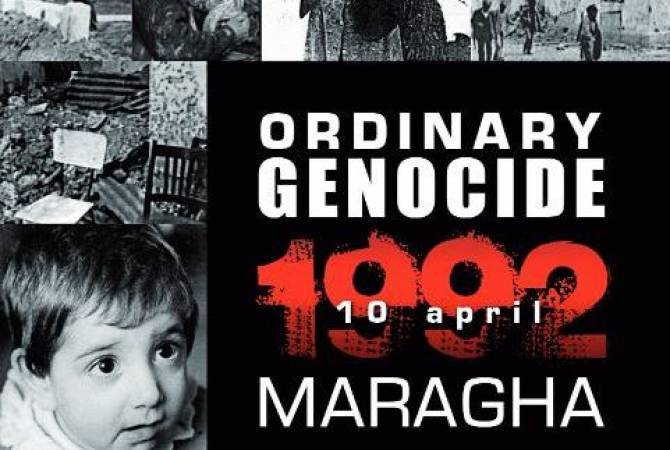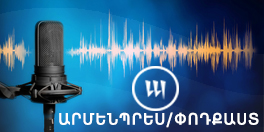"Christian Cross marks were made on the bodies": Eyewitness accounts on the Maragha Massacre
 11:00, 10 April 2020
11:00, 10 April 2020YEREVAN, APRIL 10, ARMENPRESS. On April 10 of 1992, Azerbaijani Defence Ministry, Internal Affairs Ministry and OMON forces (Special Purpose Police Units of the Ministry of Internal Affairs of Azerbaijan) launched an attack on Maragha, a village located in the Martakert region of Nagorno Karabakh. "This was truly like a contemporary Golgotha many times over”,- writes Baroness Cox of Queensbury, a defender of human rights in the House of Lords, United Kingdom, who visited the village after the massacre.
The eyewitnesses of the Maragha Massacre say that the shelling started early in the morning, at about 5:30-6:00 a.m. "They were shooting from all kinds of arms, including "Grad", heavy artillery, tanks...The OMON soldiers entered the village together with armoured vehicles followed by many large groups of looters. They didn't spare anyone's life. They killed both the elderly, women and children. They slaughtered everyone. I saw it with my own eyes. They slaughtered, and children were taken captive", recalls Vladik Avagyan, the assistant of the self-defence unit in Maragha.
The self-defence units heroically resisted against the 2 attacks. Only in the afternoon, when the Azerbaijani forces launched the attack along with many armoured vehicles, including tanks, the self-defence units which was experiencing a lack of arms, had to retreat. Staying in the village only a few hours, Azerbaijani forces turned Maragha into ruins. Most of the residents of the village had left the village before the main attack but some women, children, elderly and disabled people, who were not able to leave, were staying in the background shelters. These residents - almost 50 people - were slaughtered in the most violent ways, dismembered, maimed, burnt alive and 49 people were taken captive. Some of the captives were later exchanged but the fate of 19 peaceful civilians is yet unknown.
The Armenian population of Maragha became the victim of Azerbaijan's genocidal policy. They were murdered only because of their Armenian ethnicity. “We should kill you until the last one, Karabagh is ours, you should be demolished and not just evicted: we should kill all of you, Karabagh is ours and it’s us, who should live here, not you…. They were swearing at Armenians. They said that we are Armenians and we are haram [indecent]. They looked down on us with hatred, with a feeling of disgust”, recalls Karine Poghosyan, a survivor who lost her relatives, including her sister, during the Maragha Massacre. She was taken captive along with her children (3-year-old son and 1.4-year-old daughter), father-in-law and neighbours. She was exchanged together with her son but it took a year and seven months to find her daughter who at the time was already 3 years old. Her sister Zarine's and her husbands are still missing.
Roma Karapetyan, the commander of the self-defence units in Maragha, recalls: "Someone was with a cut-off head, someone stabbed along the body, a cross on the forehead and chest. They stabbed the bodies with knives and marked Christian crosses. A small kid was killed, they laid him next to his slaughtered mother, on her chest. Almost all the corpses had Christian cross marks on them".
The Maragha Massacre reminded Mileta Gabrielyan of the Armenian Genocide in 1915. "When we were running, I remember, people were in the field, walking in rows, as pictured in the movies of the Genocide. I look at those photos and see the same thing", says Mileta.
The self-defence units were able to liberate the village by midnight and buried their slaughtered neighbours and relatives. The residents of the nearby villages also took part in the liberation operation, after hearing about the tragedy they immediately rushed for help.
"Blood flowed through the streets. One of the tractor-trailers was completely full of corpses...I saw cross marks on the bodies...They did terrible things to women and girls...",- remembers Elmira Sahakyan, an eyewitness of the massacre.
The captives were also subjected to torture and torment. They were exchanged by the efforts of the Armenian side. Some of them were forced to work as slaves, women were raped, many of them returned with cigarette burn scars on their bodies. "After the exchange (we saw, that) the body of one of the girls was burnt with cigarettes. And all of these happened because they were Armenians", says Elmira Sahakyan.
"New Golgotha", as described by Baronness Caroline Cox, has not been punished or condemned by the International Community. The Maragha Massacre not only was not condemned in Azerbaijan but was also welcomed by the authorities. After the massacre, the commander of the "Gurtulush" battalion Shahin Taghiyev, and some other Azerbaijani soldiers were awarded the title of "National Hero" of the Republic of Azerbaijan.
Gohar Grigoryan





















